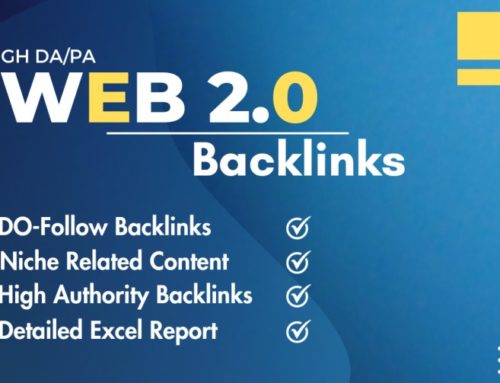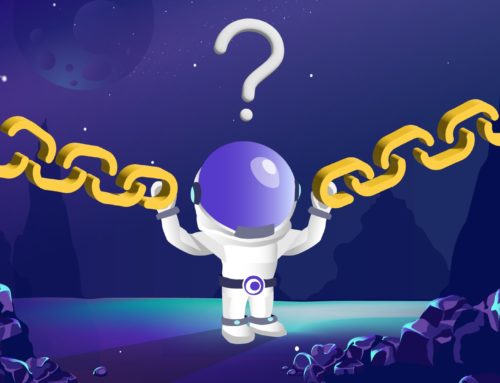Creating valuable backlinks is a task that demands both time and dedication. When you’re running low on either of these essentials, the tempting path of Blackhat backlinks building methods might seem like a quick solution to amass numerous links.
However, these shady black hat SEO tactics can unleash a slew of troubles for your website. In this piece, we’ll delve into the various issues it can cause.
Why are Blackhat backlinks a big issue?
Utilizing black hat links can spell trouble for your website’s rankings.
When Google detects the presence of spammy links, a Search evaluator scrutinizes your link profile, potentially leading to a manual action against your site.
The seriousness of a manual action can vary, with the harshest consequence being complete removal from Google’s index.
It’s worth noting that manual actions aren’t the sole consequences black hat link builders face. Search engines’ algorithms are getting better at identifying and disregarding such links.
If the Google algorithm recognizes these links, the time and money invested in building them could be wasted.
Even if the algorithm doesn’t immediately flag these links, it may eventually catch on, nullifying their impact and causing a decline in your rankings.
Is Blackhat SEO legal?
Many black hat SEO methods are technically within the bounds of the law. They do, however, violate Google’s rules and can lead to search engine penalties, but usually, they don’t entail legal consequences.
On the other hand, certain forms of black hat SEO might cross the line into illegal territory. For instance, if you were to infiltrate a website and insert links to your own site without authorization, that would be an unlawful action.
Why Do People Build Blackhat backlinks?
People build black hat links for three primary reasons:
- Short-term Effectiveness: Black hat links can yield short-term benefits because they can boost a website’s ranking until search engines detect and neutralize these links. Common black hat techniques include using Private Blog Networks (PBNs), which involve networks of websites created solely for linking to other sites. Black hat link builders buy old domains with high authority, quickly set up websites with often low-quality content, and try to hide the connection by hosting them on different servers. However, search engines are adept at identifying PBNs, putting the website’s ranking at risk.
- Ease for Spam Link Builders: Many individuals or companies lack the expertise to build legitimate links, so they hire link-building services. Some of these services, particularly the cheaper ones, resort to black hat techniques like placing links on PBNs. This is a practical way for them to provide links to their clients, avoiding the time-consuming and costly aspects of legitimate link building, such as outreach and content creation. People who are unfamiliar with SEO may not realize they’re receiving black hat links and may assume the service is effective.
- Lack of Awareness: Some website owners are unaware that they are generating toxic links because they lack SEO knowledge. Black hat link sellers are prevalent on freelance marketplaces, SEO forums, and even in email inboxes, making it easy for website owners to fall into the trap of using such services without realizing the risks involved.
6 Blackhat backlinks Building Techniques to Avoid
1. Automated Link Building
Automated link-building tools and software can create a large number of low-quality links quickly. While they may seem tempting for efficiency, these tools often generate spammy links that can harm your website’s reputation and rankings. Manual link-building is a safer and more effective approach.
2. Link Farms
Link farms are networks of websites created solely to exchange links. They offer little to no value to users and exist primarily to manipulate search engine rankings. Engaging with link farms is a surefire way to invite penalties from search engines.
3. Private Blog Networks (PBNs)
Private Blog Networks are collections of websites that exist to support one another through linking. These are often created to manipulate search engine rankings. PBNs have become a major target for search engine penalties. Using them is risky and can harm your site’s SEO health.
4. Comment and Forum Spam
Posting links in the comment sections of blogs and forums without contributing valuable content is another black hat technique. This spammy behavior not only annoys website owners but also reflects poorly on your brand. Legitimate engagement in online communities is a better way to build links and relationships.
5. Hidden Text and Links
Hiding links and text in the background of web pages, making them invisible to users but accessible to search engines, is a deceitful practice. It violates search engine guidelines and can lead to severe penalties. It’s best to ensure that all links and content on your website are visible and relevant to users.
6. Article Spinning
Article spinning involves taking existing content and using software to create multiple versions with minor variations. These spun articles are often of poor quality and do not provide value to readers. This technique violates ethical SEO principles and can lead to ranking penalties.
How to Spot Black Hat Links?
You might have black hat links if:
- You purchased a website from someone else.
- You hired someone to build links for you.
- Your site has been targeted by negative SEO tactics.
Here are the steps to spot and address black hat links:
- Check Google Search Console for Manual Actions: Google may apply penalties to your site if it has a large number of black hat links. You can find these penalties in Google Search Console by navigating to the “Manual Actions” section. Google will describe the issue and suggest ways to fix it. Once you’ve removed the problematic links, you can request a review to have the penalty removed.
- Perform a Backlink Audit: Even if you don’t have a manual penalty, it’s a good practice to conduct a comprehensive backlink audit. You can use an SEO tool like SEMRush to scan your links and identify potentially toxic domains. Signs of problematic links include low-quality content, suspicious external links, and a lack of information about the linking website.
- Look for Signs of Black Hat Links: Check the domains linking to your site for signs of black hat practices. Suspicious indicators include low-quality content, exact keyword match anchor text, NSFW anchor text, and foreign language anchor text. These could be signs of over-optimized, paid, or negative SEO links.
Removing Blackhat backlinks
The last step in the process involves removing or disavowing those links. You’ve got a couple of choices here.
One way is to contact the website responsible for the link and request its removal. This direct approach can be effective.
Alternatively, you can create a disavow file and upload it via Google Search Console. This file contains a list of websites whose links you want Google to disregard. Once it’s uploaded, the search engine instructs its crawlers to simply overlook these links, which can be a more efficient option compared to reaching out to sites individually for removal.
Final Thoughts: Let Our Experts Handle Your Link Building
So, it’s crucial to steer clear of black hat link-building methods, especially when aiming for steady, long-term SEO traffic growth without any repercussions.
Here at GetBacklinks, we specialize in crafting topnotchbacklinks for our valued clients across diverse industries. Our approach is highly transparent, ensuring that we only create links that benefit your website. Don’t hesitate to get in touch with us for further details.



